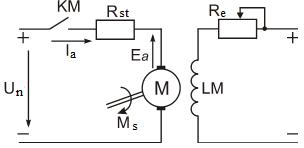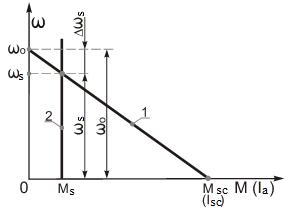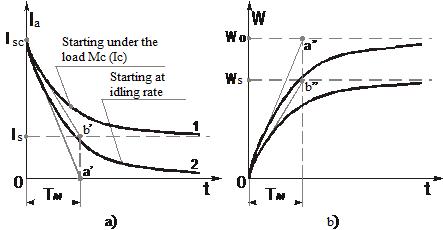
КАТЕГОРИИ:
Архитектура-(3434)Астрономия-(809)Биология-(7483)Биотехнологии-(1457)Военное дело-(14632)Высокие технологии-(1363)География-(913)Геология-(1438)Государство-(451)Демография-(1065)Дом-(47672)Журналистика и СМИ-(912)Изобретательство-(14524)Иностранные языки-(4268)Информатика-(17799)Искусство-(1338)История-(13644)Компьютеры-(11121)Косметика-(55)Кулинария-(373)Культура-(8427)Лингвистика-(374)Литература-(1642)Маркетинг-(23702)Математика-(16968)Машиностроение-(1700)Медицина-(12668)Менеджмент-(24684)Механика-(15423)Науковедение-(506)Образование-(11852)Охрана труда-(3308)Педагогика-(5571)Полиграфия-(1312)Политика-(7869)Право-(5454)Приборостроение-(1369)Программирование-(2801)Производство-(97182)Промышленность-(8706)Психология-(18388)Религия-(3217)Связь-(10668)Сельское хозяйство-(299)Социология-(6455)Спорт-(42831)Строительство-(4793)Торговля-(5050)Транспорт-(2929)Туризм-(1568)Физика-(3942)Философия-(17015)Финансы-(26596)Химия-(22929)Экология-(12095)Экономика-(9961)Электроника-(8441)Электротехника-(4623)Энергетика-(12629)Юриспруденция-(1492)Ядерная техника-(1748)
Starting of DC motor with independent excitation to the main speed at one stage of starting rheostat
|
|
|
|
Transient process of DCM IE starting to the main angular speed occurs in case of motor energizing from DC network at connecting the linear contactor КМ into armature circuit, see figure 5.1.

Figure 5.1 – Scheme of starting with switched on starting rheostat for all starting period.
In considered scheme for all starting period a resistor  is switched on permanently (starting rheostat), thus total resistance of armature circuit will be
is switched on permanently (starting rheostat), thus total resistance of armature circuit will be
 .
.
Let’s assume that executional mechanism, for which DCM IE operates, will be of 1-st class, so
 .
.
For simplification let’s consider that only electromechanical transient process occurs (electromagnetic transient process is neglected), so armature inductance is absent
 .
.
Let’s consider that power source of armature circuit has significant power, so
 .
.
Also let’s consider that DCM IE is compensated (the armature reaction is eliminated), then magnetic flux during the starting doesn’t change, i.e.
 .
.
Taking into account these simplified assumptions the equilibrium equation at starting will have view:
- the equation of voltage equilibrium
 ; (5.1)
; (5.1)
- the equation o motion
 . (5.2)
. (5.2)
In equations (5.1) and (5.2) their components have such values.
Armature e.m.f.:
 , [ V ]
, [ V ]
where  [
[ ].
].
Dynamic moment:
 ,
, 
where  –moment of inertia, [ kg.m2 ],
–moment of inertia, [ kg.m2 ],
 - angular acceleration, [s-2].
- angular acceleration, [s-2].
Moment of motor:
 , [ N.m ].
, [ N.m ].
Taking into account these markings, from the equation (5.2) let’s define the value of armature current and substitute into equation (5.1)

 (5.3)
(5.3)
 ,
,
 .
.
Let’s divide the last equation on  (
( )
)
 . (5.4)
. (5.4)
Let’s introduce such markings
 - speed of ideal idling rate; [
- speed of ideal idling rate; [ ];
];
 - electromechanical time constant, [ s ]; [
- electromechanical time constant, [ s ]; [ ];
];
 - speed drop at loading of motor with load static moment
- speed drop at loading of motor with load static moment  (characteristic 2, see figure 5.2);
(characteristic 2, see figure 5.2);  .
.

Figure 5.2 – Starting static characteristic.
In its turn electromechanical time constant  with the help of short-circuit moment
with the help of short-circuit moment  can be written as:
can be written as:
 ,
,
i.e.
 (5.5)
(5.5)
It is easy to prove:
 ,
,
because 

because 
 , or
, or  (5.6)
(5.6)
Ratios (5.6), obtained from the consideration of physical essence of initial starting moment, affirm written equation (5.5).
From the expression (5.5) a physical essence of electromechanical time constant can be formulated:
Electromechanical time constant is time, during which ED, that have inertia moment  , will accelerate without a load from the rest state to speed of ideal idling rate
, will accelerate without a load from the rest state to speed of ideal idling rate  (characteristic 1) with constant motor moment, that equals to short-circuit moment
(characteristic 1) with constant motor moment, that equals to short-circuit moment  of motor (see figure 5.2).
of motor (see figure 5.2).
From (5.5) it is running out, that value  doesn’t depend on load
doesn’t depend on load , but depends on
, but depends on . With increasing of
. With increasing of  moment
moment  decreases, so constant
decreases, so constant  increases.
increases.
Taking into account (5.3), (5.4) and accepted markings, equations (5.1) and (5.2) can be represented in form
 , (5.7)
, (5.7)
 , (5.8)
, (5.8)
where .
.
Solution of equations (5.7) and (5.8) relatively to  and
and  (that are not considered here) show, that current decreasing during the starting (fragment а of figure 5.3) and speed increasing (fragment b) of DCM IE in function of time are simple exponents.
(that are not considered here) show, that current decreasing during the starting (fragment а of figure 5.3) and speed increasing (fragment b) of DCM IE in function of time are simple exponents.
Theoretically a starting process ends in infinitely long time, but in practice it can be considered, that starting process ends at
 ,
,
because angular speed in this case differs from its steady state value not more than on (5 – 2)%.
In such a way, from time  after the starting speed becomes practically steady state, starting process can be considered finished.
after the starting speed becomes practically steady state, starting process can be considered finished.

а – exponents of armature current damping;
b – exponents of angular speed increasing.
Figure 5.3 – Graphs of current and speed changing at starting.
Though starting would be realized all time under the action of moment , then angular speed would be changed in time along the straight line
, then angular speed would be changed in time along the straight line  (at motor starting without load) and along the straight line
(at motor starting without load) and along the straight line  – at starting under the load, figure 5.3, fragment b. So, if to draw a tangent line from origin of coordinates to curve 2 to intersection with horizontal line, passing through a point
– at starting under the load, figure 5.3, fragment b. So, if to draw a tangent line from origin of coordinates to curve 2 to intersection with horizontal line, passing through a point , then obtained interval
, then obtained interval  gives in scale the value of electromechanical constant
gives in scale the value of electromechanical constant  (the same can be defined, if from the origin of coordinates draw a tangent line to a curve 1 to intersection with horizontal line, passing through the point
(the same can be defined, if from the origin of coordinates draw a tangent line to a curve 1 to intersection with horizontal line, passing through the point ).
).
In first case there was idling rate, in second – operation under the load –  remained without changes.
remained without changes.
There are analogical considerations also defining the electromechanical constant  by graphical method from current graphs. Only in this case the tangent line should be drawn (to curves 1 or 2) from the point
by graphical method from current graphs. Only in this case the tangent line should be drawn (to curves 1 or 2) from the point , figure 5.3, fragment а.
, figure 5.3, fragment а.
|
|
|
|
|
Дата добавления: 2014-01-05; Просмотров: 622; Нарушение авторских прав?; Мы поможем в написании вашей работы!